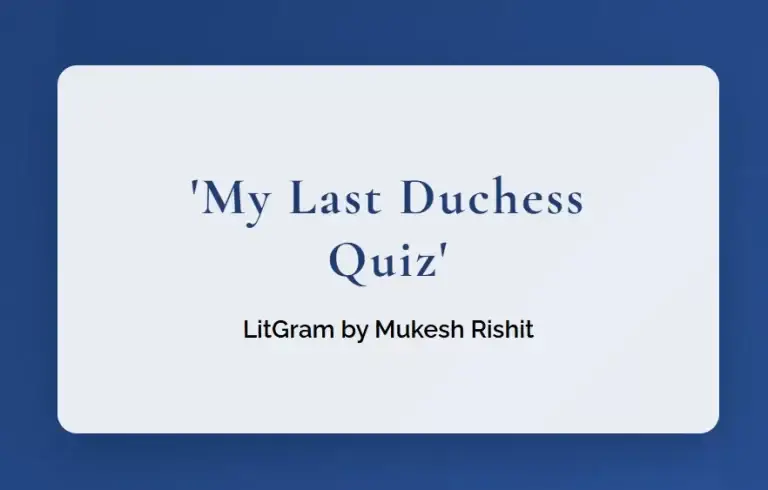Start an exciting trip through the complex world of Robert Browning’s dramatic monologue, “My Last Duchess,” with our in-depth My Last Duchess quiz. This quiz is perfect for literature students, poetry lovers, and fans of Victorian literature. It tests your knowledge of one of the most gripping poems from the 19th century.
Explore Browning’s psychological portrait looking at:
• The Duke of Ferrara’s spine-chilling story
•Robert Browning’s skilled use of dramatic irony
• The poem’s rich historical and artistic background
• Key symbols and what they mean in the monologue
• Ideas about power, jealousy, and treating women as objects
Are you a Browning expert or just starting with “My Last Duchess”? Our quiz will put your analysis skills to the test. Dig into the Duke’s character – his offhand cruelty and need for control – all shown through Browning’s clever words and style.
Get better at understanding dramatic monologues brush up on Victorian poems, and see new things in this key 19th-century work. Take on our “My Last Duchess” quiz and come away with a richer grasp of Browning’s sharp eye for the mind and his skill with poetry.
Ideal for:
• Students learning about Victorian literature
• Students preparing for RPSC First Grade Exam
• Poetry fans looking to test their analysis skills
• Teachers making lesson plans on Robert Browning
• Anyone intrigued by the mental depth of “My Last Duchess”
Don’t pass up this chance to boost your literary analysis skills. Jump into our “My Last Duchess” quiz now and see Browning’s poetic brilliance in a new light!



5 Comments
Sir ji book?
very soon… 1 feb tak
Very nice questions sir.
Thank you so much
Very nice questions to answer.
Thank you sir for your efforts for us
thanks Arjun and keep visiting the website..